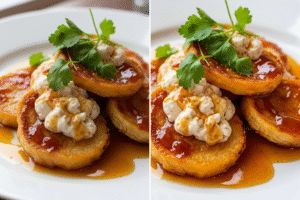A wooden chopping board isn’t just another kitchen accessory—it’s a staple of traditional cooking, blending functionality, durability, and natural beauty. Unlike plastic or glass boards, a wooden chopping board offers long-lasting use, better hygiene when maintained properly, and adds a rustic charm to any kitchen space.
In this guide, we’ll explore the benefits, types, care tips, and potential downsides of using wooden chopping boards to help you make an informed decision.
Why Choose a Wooden Chopping Boards?
1. Durability That Lasts
Wooden chopping boards, especially those made from hardwoods like maple, walnut, acacia, and teak, are known for their strength and longevity. Their dense grain resists deep knife marks, preventing bacterial buildup and increasing the board’s lifespan. A quality wooden chopping board can last for years—even decades—with proper care.
2. Naturally Antibacterial
Research shows that wood has natural antimicrobial properties. Certain types of wood release enzymes that help inhibit the growth of harmful bacteria. This makes them safer than plastic boards, which can develop deep grooves that harbor pathogens. As long as your wooden board is cleaned and dried correctly, it can be more hygienic than many synthetic alternatives.
3. Gentle on Knife Blades
If you’re tired of constantly sharpening your knives, switching to a wooden chopping board can help. Wood’s natural surface is softer than plastic or glass, which helps preserve knife sharpness over time. This not only extends the life of your blades but also provides a smoother cutting experience.
Eco-Friendly and Aesthetically Pleasing
4. Sustainable and Biodegradable
One of the biggest advantages of wooden boards is their eco-friendliness. They are made from renewable resources, often sustainably harvested, and biodegradable at the end of their life. Compared to plastic boards, which contribute to landfill waste, wooden chopping boards are a greener kitchen choice.
5. A Natural Work of Art
The warm grain patterns and rich textures of wood give wooden chopping boards a unique visual appeal. Many people even use them as serving platters for cheese, bread, and charcuterie. Their ability to function as both a cutting surface and a presentation tray adds extra value.
6. Self-Healing and Quiet
Wood has a remarkable ability to self-heal—small knife marks close up over time, helping maintain a smoother surface. Plus, chopping on wood is much quieter than on glass or stone, creating a calmer kitchen environment.
Common Types of Wood Used
Choosing the right type of wood makes a difference in both performance and longevity. Here are some popular options:
| Wood Type | Characteristics |
|---|---|
| Maple | Hard, dense, minimal pores—ideal for hygiene |
| Walnut | Rich color, slightly softer but elegant |
| Teak | Naturally oily and water-resistant |
| Acacia | Durable and dark-grained, often sustainably sourced |
| Bamboo | Technically a grass, eco-friendly, lightweight |
How to Care for a Wooden Chopping Board
To enjoy all the benefits a wooden chopping boards have to offer, you need to care for it properly.
🧼 Cleaning Tips:
-
Hand wash with mild dish soap and warm water
-
Never soak in water or put it in the dishwasher
-
Wipe dry immediately with a cloth
🛢️ Maintenance Routine:
-
Oil your board with food-safe mineral oil every 2–3 weeks
-
Sand lightly with fine-grit sandpaper if it becomes rough
-
Store in a dry, well-ventilated area
Proper care not only extends the life of your board but also keeps it safe for food prep.
A Few Downsides to Keep in Mind
Like any product, wooden chopping boards come with a few considerations:
-
Require regular maintenance (oiling and proper cleaning)
-
Porous nature means they can absorb liquids and odors if neglected
-
Higher upfront cost than plastic, though they last longer
However, these are minor trade-offs when you consider the durability and aesthetic value they bring to your kitchen.
Popular Uses Beyond Chopping
While they’re great for slicing vegetables, fruits, and meat, wooden chopping boards are versatile enough to:
-
Serve cheese platters or appetizers
-
Use as rustic centerpieces during dinner parties
-
Display baked goods or bread
-
Even as a backdrop for food photography
Their multifunctionality makes them a must-have in every modern and traditional kitchen.
Final Thoughts
A wooden chopping board is more than just a surface for slicing and dicing—it’s a reflection of conscious living. With its natural durability, knife-friendly texture, and eco-friendly origins, it offers far more than plastic or glass alternatives ever could. Wooden boards bring warmth to your kitchen, serve beautifully on your dining table, and age gracefully with time. For those who value hygiene, sustainability, and timeless aesthetics, a wooden board is an essential investment.
Whether you’re a seasoned chef or someone who simply enjoys cooking for family, the right chopping board can transform your experience. It’s a small change that brings lasting impact—both in your kitchen and for the environment.
Looking for an authentic, handcrafted wooden chopping board?
Explore the thoughtfully made collection at Laluri.com—where tradition meets quality, straight from the heart of the Himalayas.


